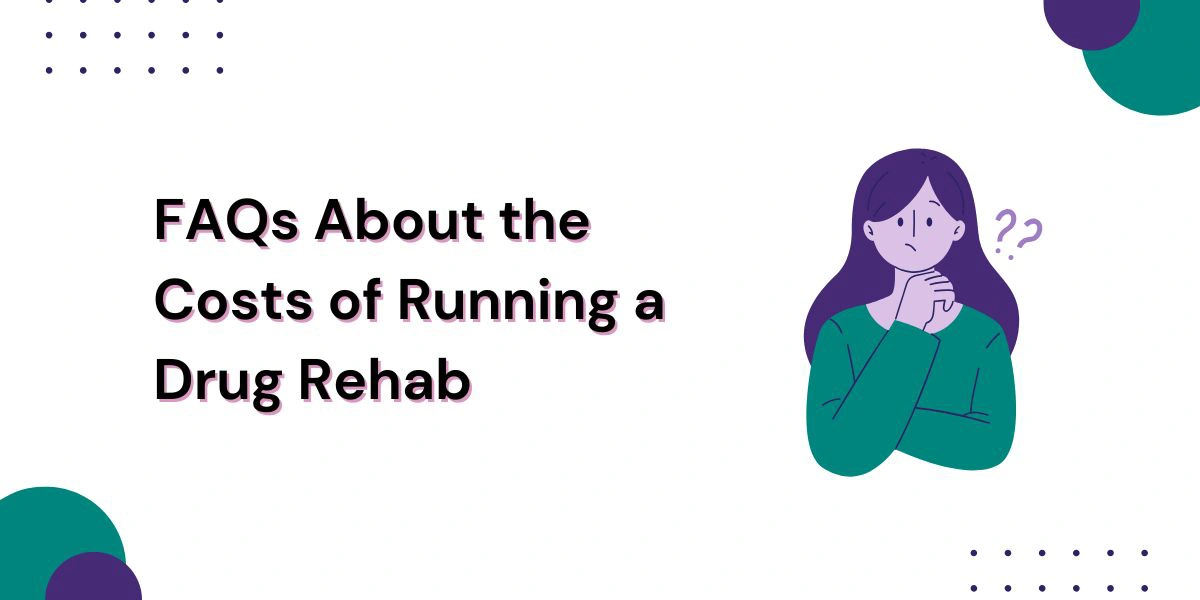Blog

Running a drug rehab facility is a blend of compassion and logistics, where life-saving services meet strict regulations, specialized staff, and ongoing operational needs. Most people only see the front-facing side—therapy sessions, group meetings, welcoming spaces. But behind the scenes is a full-scale operation that requires significant resources. So what is the cost of running a drug rehab, and what does that investment really entail?

The Key Factors That Drive Rehab Costs
The cost of running a rehab facility depends on many moving parts, but there are a few core areas that typically make up the majority of expenses.
Facility and Infrastructure Costs
One of the largest ongoing costs for any treatment center is the facility itself. Rent, utilities, property taxes, zoning compliance, and routine maintenance all add up. In areas with high real estate prices—like Los Angeles or New York—monthly facility costs alone can range from $20,000 to $60,000 or more. For residential rehabs, safety upgrades, secure entrances, and ADA compliance are often mandatory and add to the total.
Staffing and Payroll
Rehab facilities depend on a team of licensed professionals—therapists, nurses, medical doctors, and support staff—who deliver 24/7 care. According to the Bureau of Labor Statistics, substance abuse counselors earn a median salary of around $49,710 per year, but medical directors and clinical psychologists command significantly higher salaries. Payroll can represent up to 70% of a facility’s monthly expenses.
Licensing, Accreditation, and Compliance
Every rehab must be licensed at the state level and adhere to strict federal guidelines, especially if billing through insurance. Many centers also pursue third-party accreditation from organizations like CARF or The Joint Commission. Initial licensing may cost between $3,000 and $7,000, with recurring compliance fees and inspections adding thousands more each year.
Insurance and Liability Protection
Running a rehab comes with risk—from medical liability to property damage to patient safety concerns. Comprehensive coverage is non-negotiable. Depending on the size of the facility, annual insurance premiums can land between $5,000 and $20,000. Without this, a single lawsuit could threaten the entire operation.
Clinical and Medical Supplies
Centers need reliable access to supplies for daily care: drug testing kits, personal protective equipment (PPE), treatment workbooks, electronic documentation systems, and more. Programs offering medication-assisted treatment (MAT) also need to budget for prescriptions like buprenorphine or methadone, both of which require special licensing and storage protocols. The Substance Abuse and Mental Health Services Administration (SAMHSA) outlines strict federal guidelines for MAT programs, which add complexity and cost.
Software and Technology
Modern treatment centers rely heavily on digital tools. Electronic Health Record (EHR) systems, billing platforms, and compliance tracking software typically cost between $1,000 and $5,000 monthly. Add in tech support, licensing fees, and staff training, and these systems become a recurring but vital investment.
Marketing and Community Engagement
To keep programs filled and serve the community effectively, rehabs must invest in outreach. That means SEO, paid advertising, social media, and referral networks. A modest marketing budget may start at $5,000 per month, but competitive markets often require $15,000 or more.
Resident Essentials
Residential centers also provide meals, hygiene supplies, linens, recreation, and sometimes transportation. These living costs average between $1,000 and $2,000 per person each month. While these may seem secondary, they’re crucial to creating a safe, healing environment.
Tallying the Total: A Sample Breakdown
Let’s say you’re operating a mid-sized residential treatment center with 20 beds. Here’s what your monthly operational costs might look like:
- Facility expenses could run around $30,000.
- Payroll might total $150,000.
- Licensing, software, and supplies may cost another $10,000.
- Insurance and legal protections may add $2,000 to the bill.
- Marketing and outreach can reach $10,000 or more.
- Daily living expenses for clients may cost $25,000.
Altogether, that’s approximately $220,000 per month—or $2.6 million annually. The numbers increase quickly if the facility expands to include detox, MAT, or dual diagnosis treatment.
Why These Costs Matter
While the numbers might feel staggering, they reflect the intensity and depth of care that addiction treatment demands. Effective rehab isn’t just about therapy—it’s about building trust, offering structure, and delivering both medical and psychological care in a safe, regulated environment.
It’s also an investment with powerful returns. According to reports, every $1 invested in addiction treatment saves society $4 to $7 in crime-related costs and healthcare expenses. That’s a powerful argument for expanding access to care, not cutting it back.

FAQs About the Costs of Running a Drug Rehab
How much does it cost to start a drug rehab center?
Initial startup costs generally range between $500,000 and $1 million. That includes licensing, hiring, marketing, equipment, and building costs. It also requires upfront capital to sustain operations before reimbursements come in.
Is it profitable to run a rehab facility?
It can be—especially when managed efficiently. However, insurance delays and underpayments are common, making revenue cycle management essential to cash flow. That’s where companies like Hansei Solutions provide critical value.
Why are some rehabs more expensive for patients than others?
The cost to patients reflects the level of services offered. High-end residential programs may offer private rooms, gourmet meals, equine therapy, and holistic services—all of which add to operational costs.
Do insurance plans cover rehab?
Most do, at least in part. Coverage depends on the plan, state laws, and medical necessity documentation. Programs must be properly credentialed and able to handle complex billing procedures.
Supporting Sustainable Recovery
The cost of running a drug rehab may seem steep, but when you consider what’s involved—licensed staff, medical care, compliance, and compassionate services—it becomes clear that each dollar plays a role in healing. With rising demand for behavioral health care, operating sustainably isn’t just important—it’s essential.
At Hansei Solutions, we partner with treatment centers to ensure the financial side of care never becomes a barrier to helping others. Whether you’re launching a new facility or scaling operations, we provide the tools and expertise to support long-term success.
Reach out to us today for help with your addiction program’s financial future.

Ready to focus on providing healthcare? Let us lighten your load.
We’re here to address your pain points and create growth opportunities for your organization. We’re passionate about what we do, and it shows in every interaction. Learn what makes us tick and schedule a demo today.